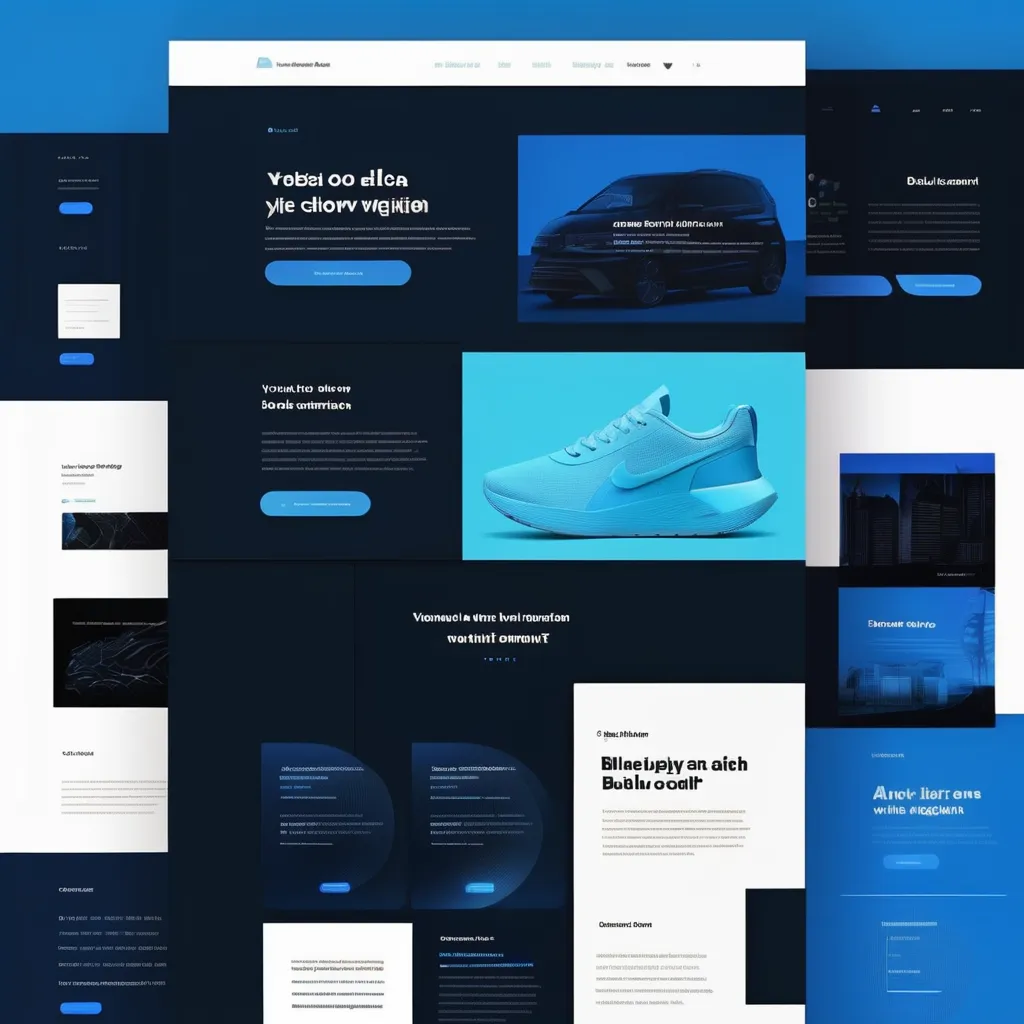How to Redesign Your Website Without Losing SEO Ranking
Contents
- 1 How to Redesign Your Website Without Losing SEO Ranking
- 1.1 Introduction
- 1.2 Understanding the Impact of Website Redesign on SEO
- 1.3 Strategies for a Successful Website Redesign Without Losing SEO Ranking
- 1.4 FAQs About Website Redesign and SEO
- 1.5 Conclusion
Introduction
Did you know that nearly 70% of website redesigns can negatively impact SEO rankings? This fact might make you think twice before embarking on a website redesign journey. However, a well-planned redesign can breathe new life into your site and improve user experience, all while preserving your hard-earned search engine rankings. In this article, we will explore how to redesign your website without losing SEO ranking, sharing actionable tips and strategies that anyone can follow. Whether you’re a business owner, blogger, or DIY enthusiast, understanding these concepts can ensure that your website continues to attract organic traffic even after a makeover.
Understanding the Impact of Website Redesign on SEO
The Role of Website Structure in SEO
When we talk about redesigning, the structure of your website is crucial. A well-structured site not only enhances user experience but also helps search engines index your content effectively.
Importance of URL Structure
- Consistency is Key: Keeping your URLs consistent during the redesign process is vital. Changes can lead to 404 errors, causing you to lose traffic.
- Redirects Matter: If you must change URLs, implement 301 redirects to guide visitors from the old URL to the new one. This preserves your SEO equity.
- Intuitive Navigation: Ensure that your website is easy to navigate. This improves user experience, keeping visitors engaged longer.
- Hierarchy of Information: Use clear categories and subcategories to help users and search engines understand your site better.
Content Changes and Their Effects
Content is king in the world of SEO. It’s important to know how changes in your content can affect your rankings.
Retaining Valuable Content
- Identify High-Performing Content: Keep your best-performing pages intact during the redesign. Analyze your site to see which pages bring in the most traffic.
- Update When Necessary: If any content is outdated, refresh it to maintain relevance and improve user engagement.
Updating Outdated Content
- Relevance Is Important: Regularly update your content to reflect current trends and information. This helps maintain your site’s authority in your niche.
- Optimize for Keywords: Integrate relevant LSI and NLP keywords naturally into your content to enhance its searchability.
Technical SEO Considerations
Ignoring technical SEO can lead to significant drops in your rankings.
Site Speed Optimization
- Load Time Matters: A fast-loading site is crucial for retaining visitors. Utilize tools like Google PageSpeed Insights to assess and improve your site speed.
- Optimize Images: Compress images and use appropriate formats to reduce load times without sacrificing quality.
Mobile Optimization
- Responsive Design: With more users accessing sites from mobile devices, ensure your redesign is mobile-friendly. Use responsive design techniques to adapt your layout to different screen sizes.
- Test Mobile Functionality: After the redesign, thoroughly test the mobile version of your site for usability and functionality.

Redesign Your Website Without Losing SEO Ranking
Strategies for a Successful Website Redesign Without Losing SEO Ranking
Conducting a Pre-Redesign SEO Audit
Before you dive into redesigning your website, conducting an SEO audit is essential.
Identifying High-Performing Pages
- Analyze Traffic Data: Use analytics tools to determine which pages attract the most traffic. Focus on preserving these pages during your redesign.
- Evaluate Keywords: Identify which keywords your top pages rank for and ensure these remain prominent in your redesigned content.
Tracking Current Rankings
- Monitor Performance: Keep track of your SEO performance using tools like SEMrush or Ahrefs. This will provide a baseline for measuring the impact of your redesign.
- Set Up Alerts: Configure alerts for significant changes in rankings to react quickly if issues arise post-launch.
Implementing 301 Redirects
Properly managing redirects is a cornerstone of maintaining SEO during a redesign.
Setting Up Redirects for Changed URLs
- Map Old to New URLs: Create a detailed list mapping old URLs to their new counterparts. This will simplify the redirect process.
- Use 301 Redirects: Implement 301 redirects to ensure search engines and users are sent to the correct page, preserving link equity.
Monitoring Redirect Performance
- Analyze Traffic: After your redesign, closely monitor the traffic to your redirected URLs to ensure users are not encountering issues.
- Fix Redirect Issues: If you notice traffic drops, investigate potential problems with your redirects.
Testing and Analyzing Post-Redesign
Once your new site is live, it’s time to assess its performance.
Using Tools for Performance Analysis
- Utilize Google Analytics: Track user behavior and engagement metrics on your new site. Look for changes in bounce rates, session duration, and conversion rates.
- SEO Audit Tools: Use tools like Moz or Screaming Frog to analyze your new site for SEO issues, ensuring everything is optimized.
Making Adjustments Based on Feedback
- Gather User Feedback: Encourage visitors to provide feedback on the new design. This can offer valuable insights into user experience.
- Iterate Based on Data: Use the data collected to make informed adjustments to your site to enhance performance further.
FAQs About Website Redesign and SEO
What should I do first when redesigning my website?
Start with an SEO audit to identify your high-performing pages and key areas to preserve during the redesign.
How can I ensure my website remains SEO-friendly during the redesign?
Maintain URL structure, implement 301 redirects, and keep your valuable content intact to safeguard your SEO.
What tools can help track my SEO performance after a redesign?
Google Analytics, SEMrush, and Ahrefs are excellent tools for monitoring SEO performance and tracking any changes post-redesign.
Conclusion
Redesigning your website can be a rewarding yet challenging task. By following these strategies, you can achieve a fresh look while preserving your SEO rankings. Remember to conduct a thorough SEO audit, maintain valuable content, and implement proper redirects. This approach will help ensure that your website continues to attract visitors, ultimately improving user experience and engagement.
External Resources
- Google’s SEO Starter Guide: A comprehensive guide for SEO best practices.
- Moz’s Beginner’s Guide to SEO: An excellent resource for understanding SEO fundamentals.
- Ahrefs Blog: Offers a wealth of information on SEO tools and techniques.

